Nevada Educators Plan How to Get Art Back in Schools Reno Ga Zette Journal
Ben Hazard had a number of defining moments in his life.
But perchance the one that said the nigh nearly him and what he believed – particularly during the year-long period when he became the first African-American professor in the history of the University of Nevada, Reno – occurred on May v, 1970.
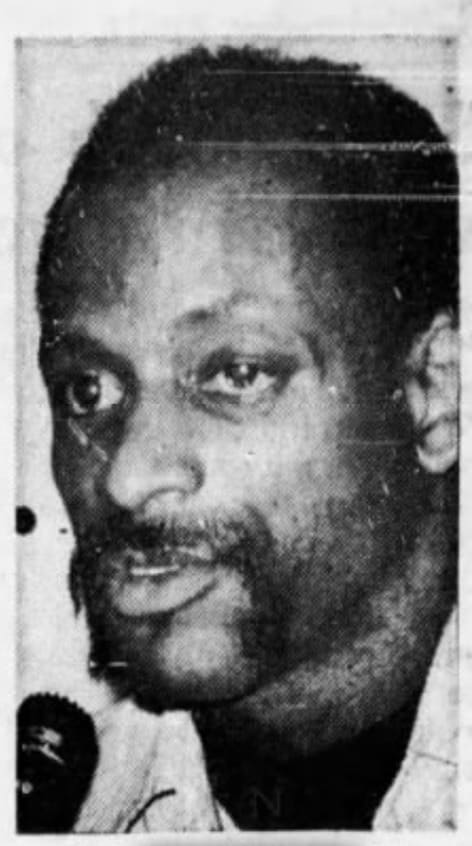
Before we go to that date, and why it was so important in knowing who Ben Chance was, we need to list some of his accomplishments in his 79 years of living.
Many of his professional achievements were groundbreaking. Nearly every ane of them were in the service of spurring change. And all of them point to a life that was constantly on the go, perpetually moving forward, or, equally Gamble's son, Marking, says "always all or cypher."
When considering the influence that Ben Hazard had on so many throughout his life, we should note the following:
He was the beginning African-American professor in University history, which led to of import conversations, some obvious and some more subtle, in how the University viewed itself and in how it was meeting the needs of its students and faculty.
"When you await at all the things my dad did throughout his life, it kind of blows yous away. He was always creating."
He was the beginning Black person to exist Curator, Special Exhibits and Education, for the Oakland Museum in Oakland, California from 1970-81. During this time Adventure received national recognition for involving diverse communities into the museum as active partners, producing more than than 300 programs and exhibitions that increased company attendance to more than than 100,000 annually.
He was appointed by President Jimmy Carter to the Found of Museum Service Board in Washington, D.C., and sat on panels for the National Science Foundation and the National Endowment for the Arts and Humanities.
He was considered one of the prime number forces involved with the Black Arts Motion of the 1960s and 1970s, which emerged in the United States every bit Black artists and Black intellectuals came together to put a renewed accent on Black creative expression, themes and thought. Information technology was chosen "the artful and spiritual sis of the Blackness Power concept" in a seminal essay past cultural critic and playwright Larry Neal. Hazard's "Medal of Honor" is all the same considered a compelling artistic effort and is frequently featured in Black Arts Movement exhibitions throughout the country.
He was deputed as an artist and completed during his tenure on the kinesthesia at the Academy of New United mexican states monuments to the Tuskegee Airmen, Navajo Code Talkers and the Buffalo Soldiers located at the New Mexico Veteran'south Memorial in Albuquerque, New Mexico.
He was commissioned to create a portrait of President Barack Obama and his family, which, when information technology was completed, was displayed during President Obama's fourth dimension as president in the family quarters of the White Firm.
"When y'all look at all the things my dad did throughout his life, information technology kind of blows you away," Mark Take a chance says. "He was always creating, always doing stuff. And it wasn't just art. He'd say, 'We're going to paint the business firm … we're going do this in the yard.' It was always something. He had a tremendous amount of energy. He just never slowed downward."
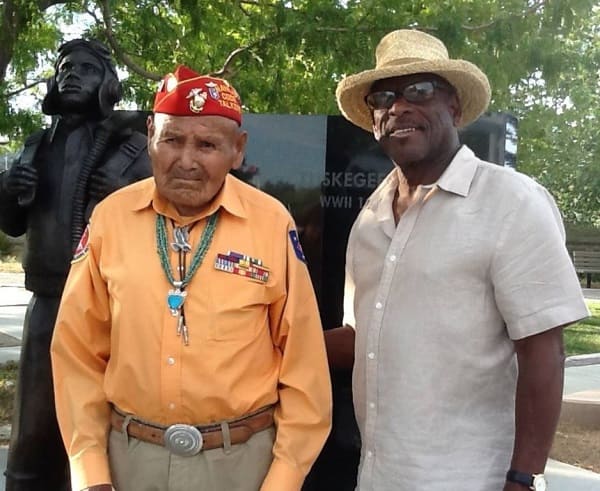
Adventure was a person defined by being the first, or one of the first, in a number of unlike contexts and arenas. He oft didn't accept time for obstacles, such equally the first of his time every bit a professor at the University when white Reno landlords refused to rent to him. He was e'er intent on non only starting, simply ever finishing the job. And when it came time to take a stand, which happened all too frequently throughout his life, Ben Hazard never backed downward.
Possibly that's why Ben Hazard'southward brief tenure at the Academy needs to be remembered. A defining moment on our campus and its aftermath speaks to how well Ben Risk understood what he was doing, while the University simply had no understanding at all of what information technology was near to lose.
Ben Gamble's beginnings
Ben Run a risk was born May xxx, 1940, in Newport, Rhode Island. He left a turbulent dwelling state of affairs at age fifteen after the passing of his mother. He lived with his aunt in Harlem, about 120th Street and Lennox Avenue, where for a time he shined shoes, worked role-time in a grocery store and thought often well-nigh his future. At 17, after graduating from high school, he joined the Air Force.
"Dad became a sign painter in the Air Strength," Mark Hazard, 54, the eldest of Take chances's three children, says. Hazard's other children include daughter Anamaria Hazard, 33, an attorney in Atlanta, and son Avant, eighteen, a boxer in Massachusetts. "He liked painting, and they said he was very creative. He ended up at Travis Air Strength Base of operations (in Fairfield, California)."
When his fourth dimension in the Air Force ended in 1962, Take a chance immediately pursued studies in art, first attention Vallejo Inferior College. He earned his Available of Fine Arts caste from the California Higher of Arts and Crafts (now the California College of the Arts) and his Master of Fine Arts degree in Fine art Exercise from the University of California-Berkeley.
Hazard was now in the centre of a artistic and progressive period of Black art and expression – the Black Arts Movement of the 1960s.
The movement's name was coined perhaps most memorably by the playwright Larry Neal, whose 1968 essay described what the Blackness Arts Movement was all about.
"(The move) envisions an art that speaks directly to the needs and aspirations of Blackness America," Neal wrote in Drama Review, Summer 1968. "In gild to perform this task, the Black Arts Movement proposes a radical reordering of the western cultural aesthetic. Information technology proposes a separate symbolism, mythology, critique and iconology.
"The Black Arts and the Black Power concept both relate broadly to the Afro-American'south desire for self-conclusion and nationhood. Both concepts are nationalistic. One is concerned with the relationship between art and politics; the other with the fine art of politics."
At its core, amidst many offshoots, the Black Arts Movement stressed collaborative effort and customs empowerment. Artists like Hazard were developing new and exciting ways to tell the story of African-American representation. As Black artists created in all forms and mediums new ways to view Blackness pride and Black culture, they were rejecting the stereotypical and the hateful for something much more meaningful and prideful.
Oakland history librarian Dorothy Lazard wrote of the time, which was being felt acutely in the Bay Area, particularly in Oakland, in the tardily 1960s: "At the urging of African American students, Black Studies courses were being offered on and off campuses. … By the early 1970s Laney College students could enroll in Swahili and African American history courses. While activists were pushing boundaries politically with boycotts, marches and speeches, African American artists, through visual and performative means, were likewise vital players in political activism … This groundswell of cultural expression made the Bay Area a mecca of artistic expression."
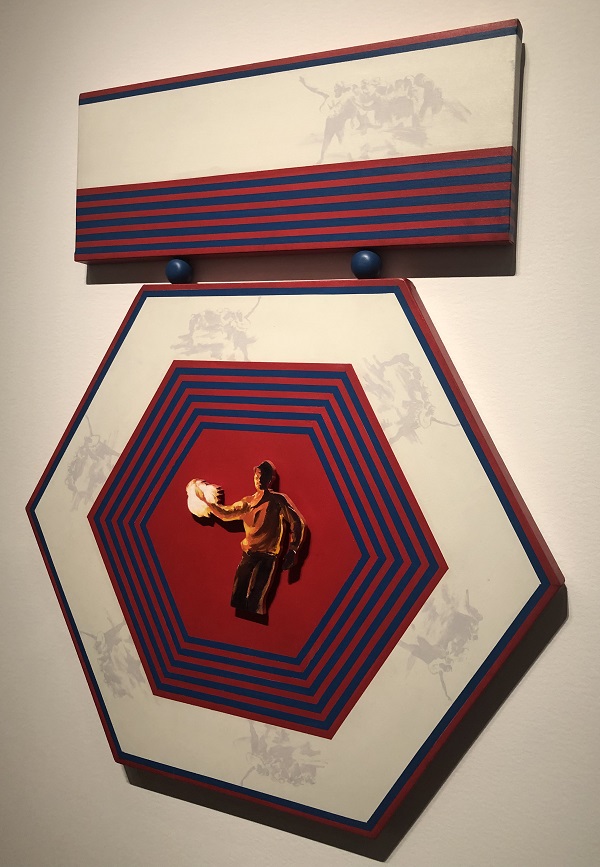
Information technology was in this creative hub of ideas that Hazard produced his 1967 work, "Medal of Honour."
Even today, "Medal of Honour" makes an unmistakable point about existence Blackness in America. The acrylic on canvas references the highest U.Due south. military decoration. The Hazard work commemorates the valor of Blackness civilian activists of the 1960s. In the painting Run a risk replaces the image of the Statue of Freedom in the Medal of Honor with that of a young Black human holding a Molotov cocktail, the flame interim every bit either a beacon or a weapon, depending on one's interpretation.
Longtime Bay Area arts critic Wanda Sabir wrote nearly "Medal of Honor" that information technology has a compelling juxtaposition of "Blackness equally a concept" likewise as a sense of "heroism" and the unblinking and solitary reality that Blackness people often experience "fighting for a country that does not value one's humanity."
Take a chance's profile and notoriety as an artist were on the rise when he joined the Academy equally the institution's first full-time Black faculty member in summertime 1969. He was 29 years old.
"I expected some trouble because I've been blackness for 29 years," Hazard told the Reno Evening Gazette in a Sept. 11, 1969 interview. "Merely I didn't expect information technology to this degree."
"I expected some trouble considering I've been black for 29 years. But I didn't expect it to this degree."
In "Drawings and Paintings by an African-American Artist" in the periodical Leonardo, African-American scholar and creative person Raymond Lark writes that Take a chance was considered role of the "so-called Revolutionary Blackness Artists of California. These artists were revitalizing the written report of Black history and were trying to express pride in the dignity of Blackness people at the same time. The so-called Black Revolutionary Artists of California won their uncomplimentary name from the White The states American establishment which was appalled past the primarily Blackness subject thing of these artists that had entered an art world not yet conditioned to accept information technology."
Reality likewise imitated art, unfortunately, in what Take chances experienced when he commencement arrived in Reno. Hazard's introduction to Reno was marked by several ugly incidents where Reno-Sparks landlords, upon learning Run a risk was Blackness, came up with a series of flimsy excuses not to rent to him.
Hazard had started his search for a place to live before that summer. For 3 months the excuses from landlords who did not want to rent to a Black person piled up. They included two properties that accepted Run a risk'due south rent check simply then, upon learning Adventure was Black, told him their backdrop had been sold. Another landlord said he changed his mind and that he rented the infinite to a friend instead of Adventure. Another accepted Adventure's cheque, but then, later Adventure had gone to his home in Oakland to become ii-year-onetime Mark and his furniture, left a note on the door of the belongings for Chance, saying information technology was no longer available.
"I call up Dad telling me that at that place was another landlord, whoever he was renting his flat from, and they changed the locks on Dad once they figured out Dad was Black," Mark Take chances says.
Ben Hazard said at the fourth dimension that he wasn't going to let whatsoever of the housing obstacles deter him.
"I want to make certain that past existence the first blackness professor that I as well will non exist the last," he said. "It makes my reason for being here all the more of import. … It is an honor to be at the University. I want to practice what I have been hired to do and at the same time I desire be aware of who I am and what I tin exercise to help my people.
"A long time ago I decided I would never leave a place because I couldn't have the force per unit area. I will leave only when I have accomplished what I came to exercise. I tin can't leave now and let someone else carry the ball."
In the days subsequently the newspaper account of Hazard's search for housing, Faculty Senate Chair Gary Peltier appear that the Faculty Senate had passed a resolution asking that the University implement an "active, aggressive housing plan" for new faculty members, particularly those who might face bigotry.
On Sept. nineteen, it was reported that a white landlord had "reconsidered" and rented a firm to Hazard.
In the wake of Risk's story, the Country Equal Rights Commission urged Black people throughout Nevada to file complaints of housing discrimination so that federal investigators could be called into the area. At the time, the Country of Nevada did not accept an Open up Housing Law. Due in part to examples such as the one faced by Hazard during the summertime of 1969, the Nevada State Legislature approved the state's first Open Housing Law in leap 1971.
"I want to make sure that by being the get-go blackness professor that I as well will not be the last."
On campus, Hazard chop-chop turned to his didactics and his duties as a kinesthesia member. His grade load for the autumn semester included pedagogy a class in plastics and two in drawing. In add-on, Gamble was constantly on the move on campus and in the customs with presentations, panels, exhibits and outreach. His "Darkness, Calorie-free, Life" showroom appeared in the Church Fine Arts gallery in late September. He judged entries in the annual Nevada Day Fine art Show in Oct. He gave a slide lecture on "The Black American Artist in American Society" at the Nevada Fine art Gallery. He was part of a panel that spoke about black literature and art held in the Thompson Education Building's auditorium. He trained docents at the Nevada Fine art Gallery for a special showroom on African-American art that was sponsored by the NAACP.
Run a risk was very aware that the entire community was watching his every move closely.
In a University Oral History, "Governor'due south Day 1970," Hazard spoke in detail about how he was often viewed with suspicion. He was non just a Black person in a predominantly white community, he dressed differently, too. This was a little by design and a piddling due to the fact that Hazard just possessed an artistic personality. He wore what was described in local news accounts as a "black hat" forth with sunglasses, dark shirt and pants, with black boots. Ironically, near of the items were purchases from a store that Hazard visited not long later on arriving in Reno.
"When I did arrive here at get-go, because I wore a black hat and a beard, it was an excuse they used – only they're talking about my black skin," Take a chance said in the Oral History. "I wore the shirt that I bought downtown, the cowboy hat I bought downtown. … Run across, yous know, that black hat that I wear? I bought it down at Parker'southward (Western Wear, a longtime clothing shop situated in downtown Reno). It'southward a apparently cowboy hat, merely I only don't cake information technology in the same way a cowboy blocks his."
Adventure said he found it interesting how vesture purchased from a downtown Reno clothing mainstay for its white community could be considered so threatening, depending on the person who was wearing it. It was, he said, notwithstanding another case of how many people in Reno saw his life in the community equally something out of the ordinary.
"But in other words, it'due south like I have got to prove every step of my way before I tin can exist accepted in this expanse," he said in the Oral History. "This is what it amounts to."
Past early 1970, still, it was condign obvious that Hazard's tireless nature, his strong piece of work ethic and non-end flurry of teaching, creating and reaching out to the customs was making a mark in Reno.
"The word decorated," Reno Evening Gazette reporter Mimi Laplante wrote on Jan. five, 1970, "is becoming synonymous with Ben Gamble, University of Nevada art professor."
"I have got to prove every step of my style earlier I can be accepted in this area. This is what information technology amounts to."
In February 1970, Risk hosted Dr. St. Clair Drake, head of the social science department at Stanford Academy. Drake, a Black civil rights activist, was in Reno for meetings with the University's Blackness Educatee Matrimony. Past early March, Adventure joined iv other University professors who were office of a pilot programme to identify problem areas in minority hiring and employment past local governmental agencies.
But even with all that he was doing, Hazard increasingly plant himself in the middle of a campus argue regarding a number of important issues. There was what was described in news accounts as an "emotion-filled" three-hour meeting on April 7, where many of the campus' Black students came forward to limited their frustration with the University administration's failure to address "weather condition they say exist on the Reno campus."
When argue virtually whether or not Hazard would be reappointed for a 2d year on the faculty broke out, College of Arts and Science Dean Glen Peterson left the meeting in the Jot Travis Educatee Spousal relationship afterwards exchanging words with Art Department Chair Charles Ross, who was always supportive of Hazard and his work.
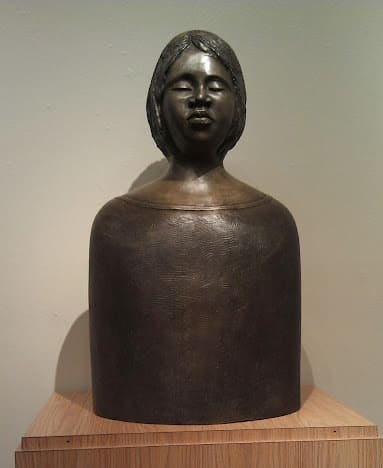
Ross contended that the University hadn't provided his department with the funding needed to reappoint Take chances. A faculty fellow member had chosen to resign his position, Ross said, so that Hazard's contract could be renewed.
"The university has a stake in Ben as well as they do in the art department," Ross said.
University President North. Edd Miller, who was besides at the meeting, said that Hazard'due south chore was not in jeopardy: "Ben Hazard will be reappointed."
In add-on to Chance's job status, which the Black students in attendance wholly supported, there was also talk of the current campus climate.
Otis Burrell, a Black Wolf Pack rail and field athlete who won the 1966 NCAA Championship in the high spring and was one of the height-ranked track and field competitors in the world, shared how he had experienced difficulties getting into the graduate plan at the University, too as finding a job on campus, due to the color of his peel.
Members of the Academy'south Black Pupil Marriage asked that the Academy provide more meaningful tutoring for minorities on campus; that more Black kinesthesia and more Black counselors exist hired; that more Black studies be offered; that the Black pupil population should grow from the current ane.iii percent to 15 percent, which would raise the number of Black students to almost 900. In 1970, there were less than 100 Black students on campus.
Over the adjacent several days, Hazard joined prominent University figures such equally the Rev. John Dodson and John Marschall of the Eye of Religion and Life (now the Newman Center), and student body president James Hardesty (who would go on to become Chief Justice of the Nevada Supreme Court), in organizing a series of on-campus meetings to hash out many of the issues that were not simply on the minds of Black students, but white students, kinesthesia and staff, too. President Miller participated in many of the meetings. He noted, "We can agree that there are issues and limited a willingness to practice something about them."
Information technology seemed as if constructive dialogue and mayhap some steps in a positive management, had begun.
Then, a niggling more than than two weeks later, everything changed.
Governor's 24-hour interval, May 5, 1970
The events of Governor's Mean solar day, May five, 1970, speak to the tenor of what was being felt on many college campuses in America during in the spring of 1970. In belatedly April 1970, President Richard Nixon revealed to the nation that he was sending U.S. troops into Cambodia. Many saw the invasion of Cambodia equally an escalation, rather than a de-escalation, of a war in Vietnam that seemingly had no end in sight. In reaction, protests were held on higher campuses throughout the land. On May iv, 1970, iv unarmed students were shot and killed past members of the Ohio National Guard at Kent Land University.
Governor's Twenty-four hour period, an annual event honoring the Nevada governor on the University campus, was scheduled for May 5. In addition to a reception for Gov. Paul Laxalt in the Jot Travis Student Union Lounge scheduled for that morning time, the annual War machine Department awards ceremony and review of the ROTC brigade would follow at Mackay Stadium.
What transpired that day remains one of the most controversial and polarizing events to ever occur at the Academy.
James Hulse, an emeritus professor of history who was a faculty member at the fourth dimension, detailed the events of Governor'south Day in his comprehensive look at the University's first 100 years: "The University of Nevada: A Centennial History." Along with English language Professor Robert Harvey, Hazard and a few other faculty members, Hulse had played a role in trying to stem passions and frustrations of educatee protestors who felt their perspective on the escalation in Kingdom of cambodia plus the senseless killing of four students at Kent State at the hands of young man Americans, hadn't been acknowledged.
Hulse wrote, "Several students who opposed the war and the military policies of the federal regime announced a 'peace rally' for the aforementioned twenty-four hours (as Governor's Day) on the s lawn (Manzanita Bowl) of the campus. Without sufficient prior planning, the rally became a march toward the stadium, and function of the governor's motorcade – with automobiles carrying war machine officers and University personnel – was temporarily interrupted by a few marchers. Two or three hundred students poured into the stadium, walked around the field where military exercises were to be held, and later filled the stands, shouting anti-war slogans. They delayed the ceremony for several minutes, and some of the demonstrators went onto the field and threatened to disrupt the ROTC buck drill."
Chance, who had driven dorsum from the Bay Area to Reno with young son Marker the twenty-four hour period before, said in his Oral History some students had reached out to him in advance of the counter-protest. He hadn't had fourth dimension to speak directly to them. Just, sensing something bigger was on tap, Hazard felt it was important to be on hand that morning.
"Nosotros were trying to make ourselves very visible to students and constantly talking with dissimilar students and maxim, 'Allow's keep information technology cool. Let's keep it cool.'"
Robert Harvey, in his Academy Oral History on Governor's 24-hour interval, described a similar sense of concern for the students' well-existence. Harvey was 8 years into a distinguished 32-year Academy career that saw him teach writing and literature and serve equally chair of the English Department twice.
"Several of the faculty were now acting, although without whatever official capacity, as monitors," Harvey said. "Mr. (Carl) Backman (a sociologist in the Section of Psychology, Sociology and Anthropology), Mr. Hulse, Mr. (Jim) Richardson, Sociology Section, and Ben Hazard, Fine art Section, a very visible man. Nosotros were trying to make ourselves very visible to students and constantly talking with different students and proverb, 'Let's keep information technology cool. Let's go along information technology cool.'"
"When I saw the crowd bound upward and get ready to move out (inside the stadium, where the ROTC cadet programme was about to commence), so I knew I had to practice something, and I ameliorate do it fast," Hazard said in his Academy Oral History on Governor's Day. "So I took on a leadership office, knowing (the protesting students) would exist looking, knowing that they would misinterpreting and misunderstanding. But my decision was I had to do something to preclude those kids from going through the aforementioned hell that I've seen take place in Berkeley and Oakland and across the country. So I got out there, took a leadership position, and helped direct the crowd in the most contained manner equally possible – the nearly un-mob-like."
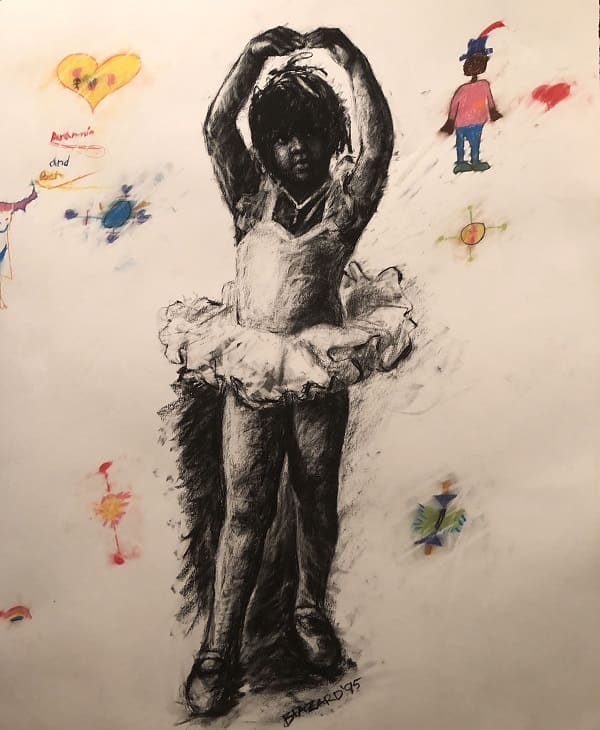
Chance said he could understand the protesting students' roiling frustration. All the same he besides realized his role at that moment was to make sure no one got hurt.
"It's most as if you're continuing next to a friend and being held underwater, and you come across how long y'all could hold your jiff," Hazard said. "… Only no. These kids got so hot and frustrated, they're starving for air. They're drowning. No one is giving them consideration. … Non President Miller, nor anyone else, got up and said, 'I think information technology'south a tragedy about what happened at Kent Country. Let'southward take a moment of silent prayer' and and so keep on with the ceremonies.
"No, they act equally if Kent State, which was less than twenty-four hours erstwhile, had never existed. They human activity equally if there was naught happening across the state. Business equally usual."
Harvey echoed Hazard's disappointment: "The simply pause past the people in charge of the ceremony was one by the president of the university, who finally decided to get up and say, 'I ask you at present to conduct yourselves and to permit the ceremony to proceed. I think you are being very ill-mannered' – and that sort of thing. Simply there was no endeavor on anyone's function managing the ceremony to requite whatsoever 18-carat acknowledgment to the feelings of the demonstrators."
"If you want to be so violent, if you feel so dedicated, do it where it counts."
Hazard said equally he was encouraging the students to behave peacefully and orderly, without violence, there was a moment that he would always remember.
"There was ane educatee out in the field," Take chances said. "He couldn't stand up simply standing back there chanting. He wanted to get up at that place and grab an ROTC guy and take hold of his gun from him, and I had to terminate him. I said, 'What do you lot want to do that for?'
"… I said, 'All correct, if you want to exist so violent, if you feel and so dedicated, do information technology where it counts.' We're talking near choice now. I said, 'Exercise information technology where it counts. These kids out at that place in the field, with their petty green uniforms and their guns, they know no more well-nigh war than you do. They take seen no more than of the war than you have. They sit with you lot in your same classroom. Why are you going to get him?'"
Run a risk, cartoon on his earlier experience of serving in the military, pointed out to the student that oftentimes it isn't the young who decide who will fight the wars – it was often elected officials, the heads of the branches of the military, or fifty-fifty the parents of the immature.
"Go whip 1 of them," Hazard challenged the student. "Otherwise get the hell back (in the stands) and human action like you've got some sense."
Hazard said demanding that the student enquire more of himself in that moment was what he had always washed equally a teacher, particularly during his fourth dimension at the University.
"My demand to my students," he said, "I say this. 'Listen, I will teach y'all the best I know how, merely if you accept everything I give you, you're a fool, a damn fool. You improve demand more. Even though you lot know I'thou giving everything, demand more than. Considering when yous leave this classroom, that's where it's going to count.'"
"'Mind, I will teach you the best I know how, but if you lot accept everything I give you, you're a fool, a damn fool. You better need more. Fifty-fifty though you know I'k giving everything, demand more. Considering when yous exit this classroom, that'southward where it'due south going to count.'"
Hulse wrote in the "University of Nevada: A Centennial History" of the key role that Hazard and others played that 24-hour interval: "… some kinesthesia members and moderate students joined the ranks of the protestors for the purpose of urging restraint. Knowledgeable nearly trigger-happy confrontations that had occurred elsewhere, several faculty members and students decided the best way to deal with a potentially dangerous crowd was to join it with voices of moderation and responsibleness, in the hope of reducing the influence of the hate-mongers and rabble-rousers. Past this process, the most emotional members of the oversupply were prevented from turning the situation into a anarchism."
Although the demonstration ended without violence, due in no pocket-size part to the calming influence of faculty members like Chance, the adjacent few days did encounter an acknowledgment by the Academy regarding the Kent Land tragedy, as well as 2 violent acts that rocked the campus.
At v p.m. on the next day, Wed, May vi, President Miller announced that classes on Friday – the day that national memorials for the Kent Country students who had been killed would be held throughout the country – would not be mandatory and that no action would be taken against faculty or students who failed to attend form that day.
In the early forenoon hours of Th, May seven, while the building was unoccupied, Hartman Hall, the University's ROTC building, was firebombed. A second firebombing occurred on the morning of Monday, May 12, confronting the Hobbit Hole, the house located at 1035 North Virginia Street that was used every bit a meeting surface area by protestors prior to the Governor's Day sit-in the week before. The Hobbit Hole had been a coffee shop until the previous semester. Two students who were within the home at the time of the firebombing escaped injury.
Governor's Day was a flashpoint that would have repercussions in the short-term for the Academy, as well every bit years into the future, for many who were involved.
President Miller, in his University Oral History which was recorded in 1972-73 by the University'south Oral History Programme, said "the scars are notwithstanding at that place" from what had happened during the Governor's Day sit-in.
"I can't reconstruct it possibly even whatever other style, because I fully sympathize with the desire to protestation on that day," Miller, who left the University in 1973 to become president of the Academy of Maine at Portland-Gorham, said. "That's fine. It should have happened; if I'd been a pupil I would have wanted to express myself, too. And I also sympathise the temptation brought well-nigh by the ROTC review that day. So I'm non sure what should have happened, but information technology was an enormously disappointing kind of way for the thing to plow out."
Steps toward alter for representation of underrepresented groups, both in educatee and faculty composition as well as programs, slowly began on campus following the events of 1970.
"I'one thousand not sure what should have happened, but information technology was an enormously disappointing kind of way for the thing to turn out."
In October 1971, sixteen people, including thirteen students, several of whom belonged to the campus' Black Student Union organization, were arrested post-obit their occupation of the activities office of ASUN in the Jot Travis Pupil Union. The protestors staged their sit-in to bring about attention to their request for equal campus space for their organization.
In 1972, information technology was announced that Michael Coray had been hired by the Academy to teach African and Afro-American history, as well as to coordinate a new ethnic studies program that would include not only the Black experience, just what newspaper accounts referred to as bookish offerings for members from the "Indian, Asian American and Mexican American" groups.
Coray, who was the University's first Blackness history professor, had received his doctorate from the University of California Santa Barbara and had taught previously at Syracuse University. Coray would go on to a distinguished career that spanned parts of 5 different decades at the Academy, including his role from 1994-2008 as the University'due south Special Assistant to the President for Multifariousness.
Leaving Reno
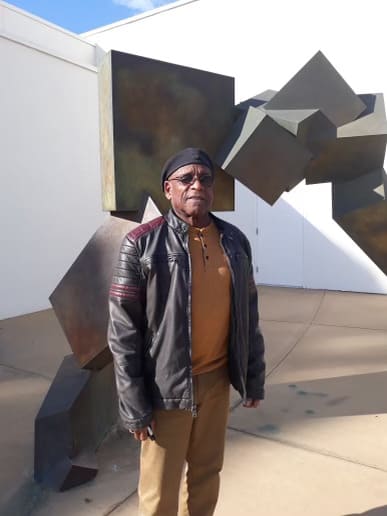
Ben Hazard announced that he was leaving the Academy of Nevada on July 18, 1970. He was joining the Oakland Museum as curator of education and special exhibits for a bacon of $1,400 per month.
In an interview with the Reno Evening Gazette, Hazard cited his frustration with the Nevada Board of Regents considering the board was "cheating the state and the customs" because it wasn't seriously addressing many of the issues, particularly for minority students, that were occurring at the University.
"They aren't working with the university, simply playing a political game and appeasing the customs rather than presenting the facts," he said.
There was no denying that the events subsequently the Governor'southward Mean solar day demonstration had been deflating for many students besides every bit sure faculty members.
"I didn't say, 'Peace now, peace now.' I said it also many times already. I know what it means. I don't have to tell them. I didn't have to wear an armband; the colour of my skin is the armband I can never become rid of."
In the wake of the demonstration, on May 9, the regents began an investigation against a kinesthesia member from the English Department, Paul Adamian, and one teaching assistant, Fred Maher, for their roles during the Governor's Day event. Adamian had spoken to the crowd of protestors in the Manzanita Basin before the walk to the stadium began, was seen yelling during the intermission of the governor's motorcade and had shouted protests in Mackay Stadium.
Years later, in 1998 and 2000, Adamian, in the Academy Oral History, "Governor's Day 1970: A Retrospective View," said that, "I've heard (the demonstration) be described equally rude, and that depends on your point of view very much. As I said, antiwar slogans were being chanted. What are considered swear words were probably being shouted. … And so it was noisy. In that location was chanting. In that location was noise. And I would have to say that for anybody who was office of the dignitaries and trying to bear on some sort of program, it was disruptive and disconcerting in that fashion … And frankly … I thought information technology was good. I mean that was sort of our intention – to be disruptive – so that we would endeavor to impress the extent of our business organisation about (Cambodia and Kent State). … And I haven't inverse my feelings about it since that time."
Adamian, charged with misconduct by the regents, was somewhen suspended from teaching and, months later, was fired. Although appeals reached as far as the Ninth Excursion in San Francisco on at least 2 occasions, Adamian never taught at the University again.
The "Adamian Affair," as it became known in news accounts and every bit it played out during the tardily leap and summer of 1970 was clearly on the minds of many faculty.
"Paul Adamian?" Gamble said in his Governor's Solar day Oral History. "He was doing exactly the aforementioned thing I was doing, but one difference. There's i thing I wasn't doing that Paul Adamian was doing, and that was making my political statement. I didn't say, 'Peace at present, peace now.' I said it too many times already. I know what information technology ways. I don't have to tell them. I didn't have to wear an armband; the color of my skin is the armband I tin never get rid of."
Adventure added, "And Bob Harvey had to pull Paul Adamian out of the mode because the kids are pushing so hard he was pushed into a (ROTC) bayonet, but (Adamian) still stood there and held those kids back. At the fourth dimension (Adamian) was besides proverb, 'Peace now.' He had to, and if he didn't, they wouldn't accept listened to him."
For all the positives of teaching art to students and taking his art out in the community, Risk as well had experiences that still stung.
"I had the worst times in my life existence in Reno," he said. "Similar I had cops over at my firm, and they most kicked me out for no reason. My rent was supposed to be due, my term was supposed to be due in July. (The landlord) had cops in June there because I wasn't out by June first. I had had a business firm rented, then I was existence with my kid. And (the landlord) put a annotation on the door that said, 'You can't become in.'
"… there's a lot of hell I've gone through. If I really want to put the identify down, I can exercise it. But you know, I wasn't doing that. … Only you know, talk most misinterpretations. When you lot say one matter, it ways one thing to yous; information technology'll hateful something different to someone else."
"I had the worst times in my life existence in Reno. ... In that location'south a lot of hell I've gone through."
In the July 18, 1970 newspaper story relating Hazard's proclamation that he would exist leaving the University, Hazard said, "The community is becoming more interested in humanly related things, its interest is moving away from just gambling. I hope the people in the community volition keep and resolve the bug that are facing them – not simply acting like they don't exist."
In an editorial two days later, the Reno Evening Gazette wrote of Take a chance's divergence: "It is too bad that Ben Adventure, the University of Nevada'southward first full-fourth dimension blackness professor in Reno, quit. Hazard, who was very popular with students and was recognized by young man artists every bit a talent, was in a position to profoundly contribute to Nevada campus life. He did so in some ways equally a person performance between whites and blacks on the Reno campus."
Says Mark Hazard: "Dad referred to his time in Reno a lot. He said that Reno experience really got his momentum going."
A high-pressure task
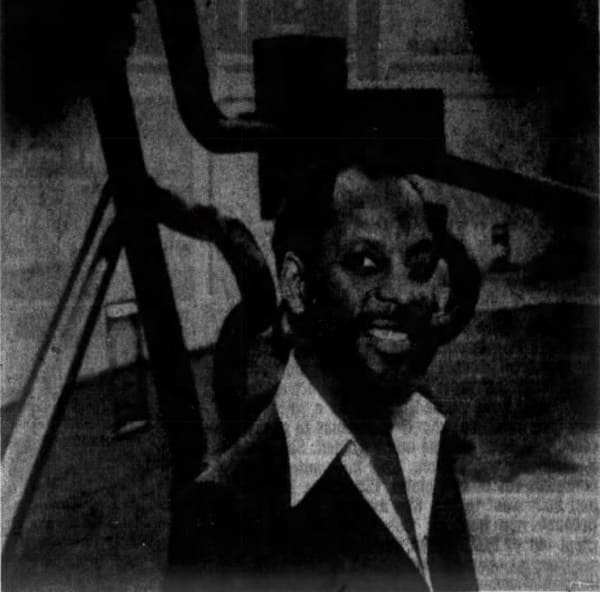
Hazard'due south time with the Oakland Museum was i of achievement and acknowledgment of what a great customs nugget the museum was. Hazard was hired in 1970 because the museum was in the midst of a six-calendar month-long boycott by the Blackness community due to lack of Black participation in its offerings and its operations. Hazard's work as curator for the special exhibits and education department clearly had an impact. He and his colleagues were hailed equally existence responsible for "the museum's well-deserved reputation that welcomes racial minority involvement and participation," as was written in an October 1981 editorial in the Oakland Tribune not long after Run a risk'due south 11 years at the museum had ended.
Take a chance told the Oakland Tribune in 1976 that his position was "definitely a high-pressure level job. But I detect I operate better on that level, anyway, so I don't really complain. I'll scream and I'll holler. Otherwise, I'll have an ulcer." Take chances's role at the Oakland Museum was designed to bridge the gap between the institution and its surrounding community, which he was able to exercise through numerous programs and partnerships with local schools and community groups that made the museum more accessible and honored nationally for its outreach efforts.
"Ethnic people await at museums as a bad example of what history is supposed to be nearly or a bad example of what art's about."
Hazard's goal, he said, was to ensure that members of underrepresented and underserved communities could run into themselves in the museum – in its programming, in its exhibits and displays, in the artists that were featured and in the diversity of visitors who were sharing the experience.
"Ethnic people look at museums as a bad instance of what history is supposed to exist virtually or a bad example of what art's almost," he said. "My business is for people being aware and having a choice in something as basic and human as artistic energies. I call back museums have major roles that they should be playing and they have not been playing. It is not just showing the best of the arts, simply being willing to teach and expose people to the arts, period. … I like to brand things happen."
Hazard then embarked in a period of his life that was a mixture of public service, being an administrator and pedagogy on college campuses.
"Dad always fell back on teaching – I think that was what he really loved doing," Mark says. "When he wasn't an administrator of some sort he always went back to teaching. He loved his students so much. But there were a lot of times in his life when being an administrator was pretty important, too."
Hazard was a member of the Alameda Canton Arts Commission and designed a flag for Alameda County that is nonetheless in use to this day.
He taught art at major institutions such as Stanford and the University of Texas.
He was the City of Oakland's Director of the Crafts and Cultural Arts Section from 2000-2003, working closely with Mayor Jerry Dark-brown, whose administration was in the midst of a city-broad arts and cultural revitalization effort that included Chance'southward department administering more than $three.5 million annually to local artists and organizations.
He established the Crafts and Cultural Arts Gallery in the high-rise Elihu M. Harris Land Building in Oakland and co-produced the annual Art and Soul Festival.
Upon leaving the City of Oakland, he served equally Dean of Fine Arts at Laney College.
In 2010, Gamble was appointed to the faculty of the University of New Mexico equally an Africana Studies Professor of Art.
And, throughout it all, Take chances was constantly creating.
In 2008, Adventure was commissioned to paint a portrait of the Obama family unit. He presented it to the family during a reception in Palo Alto, California, during the presidential campaign and then it was shipped to the Obama campaign'due south transition headquarters shortly later on Barack Obama had been elected the nation's beginning Black president.
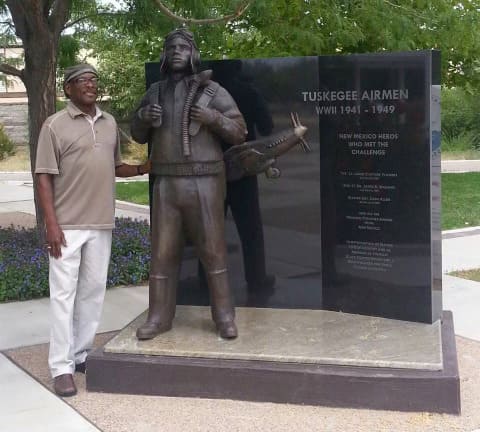
"It was genuine love, 18-carat affection, genuine feeling," Hazard told Bay Area news channel ABC7 in Jan 2009. "(Obama) was so moved. … He said that this was, 'The first cartoon, or painting, done of my whole family unit. I have some of me, merely not the whole family.'"
The portrait was eventually hung in the Obama's family residence in the White House. The honor made Run a risk at that time one of just a handful of Black artists to always accept their piece of work displayed either in the public or private areas of one of the earth'due south virtually recognizable buildings.
In Oct 2011, Take chances completed a bronze statue of a Buffalo Soldier at the New Mexico Veteran's Memorial. The statue honored the Blackness soldiers who served in Ground forces cavalry and infantry units in the belatedly 1800s and early 1900s.
2 years later on, in late summer 2013, Hazard completed his statue honoring the Tuskegee Airmen at the New Mexico Veteran'southward Memorial. During his time in New Mexico, Hazard had a adventure to meet several of the former Tuskegee Airmen, men who had been part of nearly 1,000 or so Black individuals who had trained at Tuskegee Army Air Field in Tuskegee, Alabama during Earth War 2 between 1942-46.
The Tuskegee Airmen became pilots, navigators, bombardiers and instructors who helped de-segregate the armed forces. The members of the local chapter of the General Lloyd Westward. "Fig" Newton chapter of the Tuskegee Airmen in the Albuquerque, Due north.M. area were at present men in their mid- to late 80s. Hazard met and became friends with many of them. They were in Hazard's eyes part of a living history that needed to be told.
"Dad fabricated a lot of friends while he was living and working in New Mexico," Marking Run a risk says. "I call back that was something that really inspired him to practise his part in telling the stories of the Buffalo Soldiers, the Tuskegee Airmen and the Lawmaking Talkers.
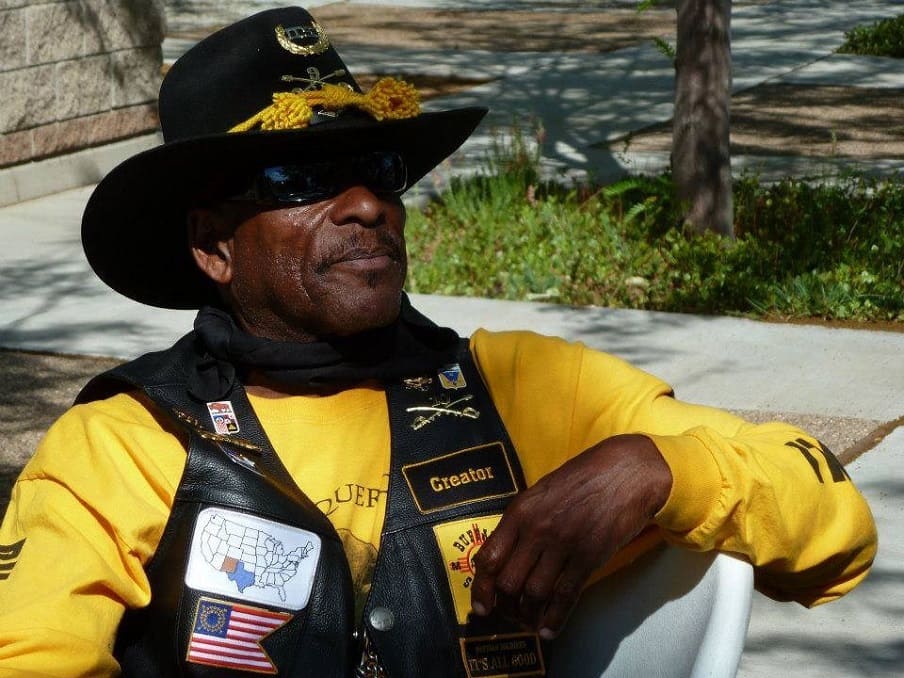
"There was a Buffalo Soldiers motorcycle club in Albuquerque that really was involved with the Buffalo Soldier monument. Dad got to know and become friends with all of them. He was too old to learn how to ride a motorcycle. But they wanted him to be a office of it and they ever welcomed him. He really enjoyed being friends with all of them."
In October 2016, Hazard unveiled the statue honoring the Navajo Lawmaking Talkers at the New Mexico Veteran's Memorial. The Navajo Code Talkers were an aristocracy grouping of Native American Marines whose native linguistic communication could not exist broken by Japanese forces during World War Two. Surviving Navajo Lawmaking Talkers Thomas H. Begay, David Patterson and Joe Vandever Sr. were in omnipresence, along with Adventure, Marine color guard and numerous other local, state and tribal dignitaries, for the October. 29, 2022 ceremony.
Mark Gamble, who is an airline captain and for many years was a commercial airplane pilot before joining a jet lease company in the Primal Valley of California, says the Adventure family stretches across the state and is "blended" in practically every sense of the word. Hazard'southward blood brother Art notwithstanding lives in Albuquerque and a sister, Paula, lives in Texas. Betwixt Marker and his wife Demetria, there are six children that Mark calls his ain. There is a 21-year age difference between Marking and his younger half-sister Anamaria Take chances, who followed in her dad'south footsteps and graduated from the University of California, Berkeley in 2010 and at present practices law in Atlanta. At that place is a 36-year age divergence betwixt Mark and his younger half-blood brother Avant Hazard, who is training to be a professional person boxer in Massachusetts, which, Marking says with a gentle laugh, just speaks to the fact that "Dad every xx years or and then decided to have another kid. We're a loving family. Nosotros always try to be in that location for each another. Dad was very creative and he worked really hard. Sometimes he was so busy with all the things he was doing. Just he was e'er a very loving Dad."
Ben moved back to California from New Mexico in late 2016.
"Retirement" wasn't part of Hazard's vocabulary.
"He had more energy in his late 70s than I have at present," Marker says. "Dad was e'er creating, all the fashion to the cease. He always had something he was working on, always hustling."
In Marker's Chowchilla, California, neighborhood, on a cul-de-sac near a golf game grade, Run a risk became friends with all of the neighbors.
"Dad was not an introvert," Marker says. "That was Ben Adventure: open, approachable, e'er on the move. If he wasn't engaged in something, that would bring him downwardly."
Hazard never turned downward an opportunity to encourage anyone about the possibilities of art. He reconnected with erstwhile students, many of whom dated back two or three decades.
If in that location was an offering made to serve as a judge for an art contest or a school spelling bee or any other kind of activity that encouraged young people to express themselves creatively, Hazard never said no. Indeed, fifty-fifty a cursory net search turns up dozens of short newspaper items throughout the years, mentioning Ben Hazard's participation in schoolhouse and community art events for young people.
"He was always judging art, all the way to the end," Mark says. "Dad loved that adventure to see what the young kids were doing, to try to assistance them on that path."
It was in May 2022 when Ben Gamble, the man who seemingly could never tedious down, was diagnosed with stage four lung cancer. He was a smoker earlier in life, just had quit in 1973. He had gone dorsum to Atlanta to visit his daughter and her fiancée but wasn't feeling well when Mark picked him upwards at the airport in San Francisco.
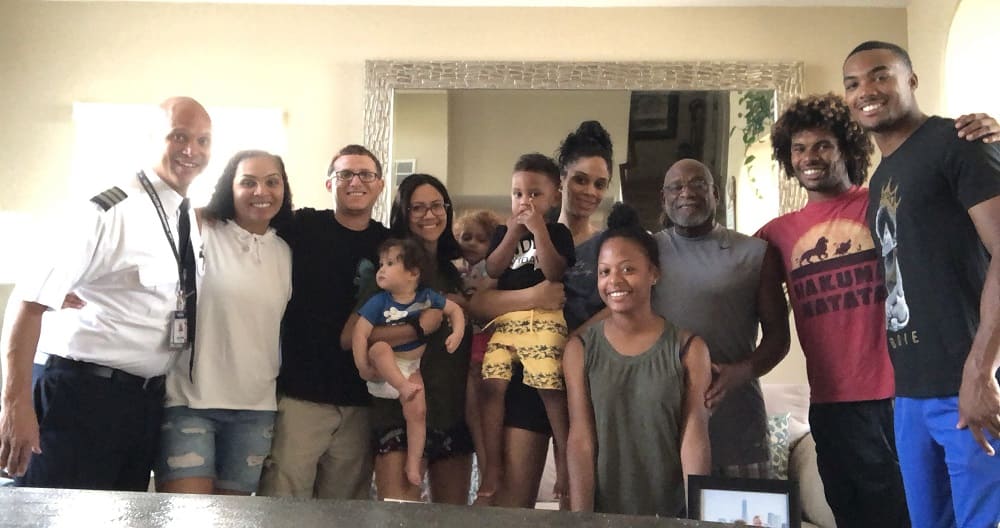
It was an interesting time for Mark's "blended" family. Ben'southward first wife and Marker'south mother, Sarah, was also living with the large family at the time as Ben underwent cancer treatments.
"He wasn't admitting any defeat, that'south for sure," Marker says "Here he was, living in a business firm with five of the kids in our blended family and his wife from 50 years agone, all of us under one roof, and he's got stage four cancer. It was rough on him. It was rough on him that his health wasn't what information technology once was.
"Merely I still retrieve these moments where I'd just sort of shake my head about Dad and what he was withal capable of doing. I retrieve calling Dad upwardly in the middle of his treatment and I was in Houston at the time. I think hearing noise in the background. I said, 'Dad, where are you?' And without hesitating he said, 'I'm in my auto. I'm driving to the Bay Area to encounter one of my former friends.' I wondered if this old friend, if she even knew that Dad was on his way to see her. I told him, 'Y'all should probably call her and let her know you're coming … and by the fashion, you know you lot shouldn't be driving, right?'
"But that was Dad. Even with stage four cancer, he was going to keep living his life the way he e'er had. He just knew one style – all or cypher."
On November. 23, 2019, Marker Hazard was working, out on another flight trip. He called his Dad to check in. Ben, characteristically, had a positive response to his son'southward check-in. He said he was doing fine.
An hour after, Ben Hazard suffered a stroke due to cancer complications. Less than two weeks later, on Dec. 5, 2019, Ben passed abroad.
"Dad was like a lot of artists – he didn't die a millionaire," Mark says. "He had humble ways to get-go and humble ways at the end. Merely the things he did … the art he did and the projects he completed … sometimes money doesn't hateful almost equally much when you lot look at how Dad lived his life and what he felt was of import."
"Y'all know, whenever I think almost my Dad," Mark continues, "I think nearly how I didn't realize the struggles my Dad had to go through to do all the things that he did. That'due south why those last few years with him living with us were and so important. I was able to help my Dad near the stop. That meant a lot to me."
Today, the Chance family feels they are in possession of something that transcends all of the art, all of the accomplishments, all of the groundbreaking moments, that made up Ben Risk'southward life.
Whenever the Gamble children think about their male parent, they feel an immediate and overwhelming sense of pride. A sense that in a life of marked by so many firsts, it feels so appropriate that there was only one Ben Take chances. This was an creative person and a teacher of exceptional talent. A person who lived a life that never slowed. A man who never allowed himself to be slowed down – by anything.
"That old man never stopped," Mark says. "Oh man, did he do a lot of stuff."
Sources
Ben Hazard career accomplishments: "Ben Hazard – Alameda County" proclamation, February 4, 2020.
"Black Arts Move" context and essay by Larry Neal: "The Black Arts Move," by Larry Neal, Drama Review, Summertime 1968,
"When you look at all the things my Dad did …" and all other quotes from Mark Hazard, from Mark Take chances phone interview, Jan. 27, 2022.
"At the urging of African American students, Blackness Studies courses were being offered on and off campuses …": "The Black Arts Move in Oakland and Berkeley," by Dorothy Lazard, City of Oakland, Feb. 27, 2019.
"Medal of Honor": Photo of Ben Hazard's "Medal of Award" supplied to author for reference by Mark Hazard, including background on "Medal of Honor" from the Oakland Museum.
"Medal of Honor" and "Blackness every bit a concept": "DeYoung Museum: Soul of a Nation: Fine art in the Age of Black Power, 1963-83" by Wanda Sabir, San Francisco Bay View Blackness National Newspaper, March 13, 2020. Medal of honor
Hazard equally part of the "Revolutionary Black artists of California": Drawings and Paintings by an African American Creative person" past Raymond Lark, Leonardo, Vol. 15, No. one, Winter 1982,
"I expected some problem considering I've been black for 29 years": "Some Problem," Take a chance interview in the Reno Evening Gazette, Sept. 11, 1969.
"I want to make certain that by beingness the first blackness professor that I also will non be the last": "Some Problem," Run a risk interview in the Reno Evening Gazette, Sept. 11, 1969.
Kinesthesia Senate resolution virtually minority faculty housing: "Discrimination in housing discussed," Reno Evening Gazette, Sept. 26, 1969.
"White landlord had 'reconsidered' and rented a house to Adventure": "Negro professor finds a firm," Reno Evening Gazette, Sept. nineteen, 1969.
"State Equal Rights Commission urges Black people" to report discrimination in wake of Chance story: "File federal complaints on discrimination, communication," Reno Evening Gazette, Sept. 17, 1969.
The state's get-go Open Housing Constabulary: "Senate approves state'due south showtime open housing law," Reno Evening Gazette, Apr 13, 1971.
"Hazard was constantly on the motion on campus and in the community with presentations, panels, exhibits and outreach": There are numerous brusque newspaper manufactures written about Take a chance'southward activities in the community from this time period. "Art exhibit is study in lite and dark," Reno Evening Gazette, Sept. 23, 1969, is typical.
"When I did arrive here at starting time, because I wore a black lid and a beard, information technology was an excuse they used – simply they're talking about my black peel": Benjamin Hazard, "Governor's Day 1970," University of Nevada, Reno Oral History Drove.
"In February Risk hosted Dr. St. Clair Drake, caput of the social science department at Stanford University": "Items virtually people you lot know," Reno Evening Gazette, Feb. two, 1970.
"By early March, Gamble joined four other University professors who were part of a pilot plan to identify problem areas in minority hiring and employment past local governmental agencies": "Minority job program under way," Reno Evening Gazette, March 4, 1970.
Emotional April meeting on campus: "Blackness students list grievances at U. of N.," Reno Evening Gazette, April 8, 1970.
"Hazard joined prominent University figures … in organizing a series of on-campus meetings to discuss many of the issues": "Students, Miller weigh demands for changes on Reno campus," Reno Evening Gazette, April 15, 1970.
"Several students who opposed the war and the military policies of the federal government announced a 'peace rally' for the same mean solar day (as Governor'south Solar day) on the south lawn (Manzanita Bowl) of the campus": "The University of Nevada: A Centennial History" past James Hulse, University of Nevada Press, 1974.
"Robert Harvey, in his University Oral History on Governor'southward Day, described a similar sense of business organization for the students' well-being": Robert Harvey, "Governor's Mean solar day 1970," University of Nevada, Reno Oral History Collection.
"At v p.m. on the adjacent day, Midweek, May vi, President Miller announced that classes on Friday …. would not be mandatory and that no activity would be taken against kinesthesia or students who failed to attend grade that day": "Nevada students planning memorial, cold-shoulder Fri," Reno Evening Gazette, May 6, 1970.
Firebombing of Hartman Hall and the Hobbit Pigsty: "Reno campus ROTC building is firebombed," Reno Evening Gazette, May 7, 1970 and "Firebomb burns building used past Nevada protestors," Reno Evening Gazette, May 12, 1970.
"I can't reconstruct it peradventure even whatsoever other fashion, because I fully sympathize with the desire to protestation on that solar day": N. Edd Miller, "N. Edd Miller: Presidential Memoir, University of Nevada, Reno, 1965-73," University of Nevada, Reno Oral History Drove.
"In October 1971, xvi people, including thirteen students, several of whom belonged to the campus' Black Educatee Union arrangement": "Hearing set on pause of students," Reno Evening Gazette, October. thirty, 1971.
"In 1972, it was announced that Michael Coray had been hired by the University to teach African and Afro-American history, as well as to coordinate a new indigenous studies program": "U of N hires first black history teacher," Reno Evening Gazette, May 18, 1972; "Money problem may scuttle indigenous studies plan at UNR," Reno Evening Gazette, Oct. 9, 1973; "The burn down all the same burns for UNR professor, administrator," Reno Gazette-Journal, May xix, 1995.
"Ben Hazard announced that he was leaving the academy of Nevada on July 18, 1970": "Black prof quits, raps regents," Reno Evening Gazette, July xviii, 1970.
Adamian investigation: "Regents order two professors, students probed," Reno Evening Gazette, May ix, 1970.
"I've heard (the demonstration) be described as a rude, and that depends on your point of view very much": Paul Adamian, "Governor's Twenty-four hour period 1970: A Retrospective View," University of Nevada, Reno Oral History Drove.
"Information technology is too bad that Ben Gamble, the Academy of Nevada's first full-time blackness professor in Reno, quit": "On Chance," Reno Evening Gazette, July 20, 1970.
"One major reason involves the museum'due south well-deserved reputation that welcomes racial minority involvement and participation": "The museum's future," Oakland Tribune, Oct. xi, 1981.
"… definitely a loftier-force per unit area job": "The salvation of Ben Hazard," Oakland Tribune, Dec. 14, 1976.
"Hazard then embarked in a period of his life that was a mixture of public service, existence an administrator and teaching on college campuses": Ben Take chances career accomplishments: "Ben Hazard – Alameda Canton" proclamation, Feb. four, 2020.
"It was genuine love, genuine affection, 18-carat feeling": "Local artist creates Obama family unit portrait," ABC7 News, January. 13, 2009.
Hazard's creation of Buffalo Soldiers, Tuskegee Airmen and Navajo Code Talker monuments at New Mexico Veteran's Memorial: "Buffalo Soldier Monument," Albuquerque Periodical, Oct. five, 2011; "Hazard completes Tuskegee Airmen Monument," Academy of New United mexican states, Aug. 22, 2013; "Code Talker dedication today," Albuquerque Journal, October. 29, 2016.
Source: https://www.unr.edu/nevada-today/stories/professor-ben-hazard
Post a Comment for "Nevada Educators Plan How to Get Art Back in Schools Reno Ga Zette Journal"